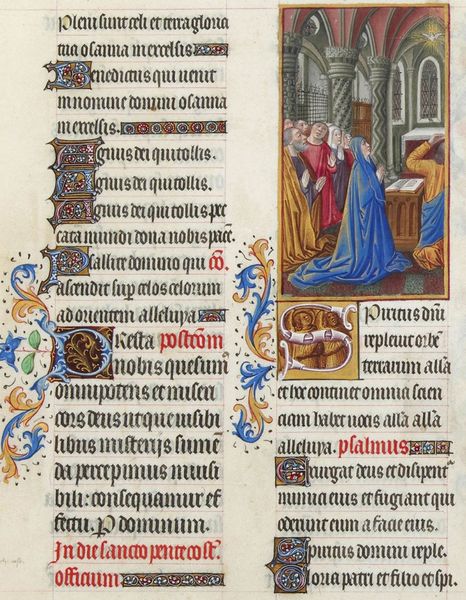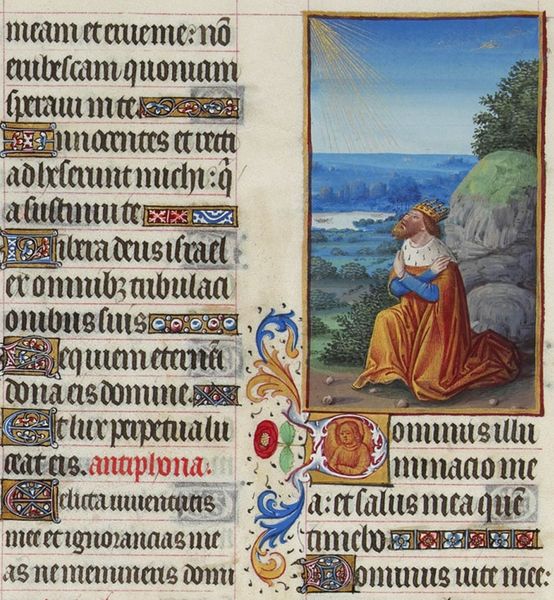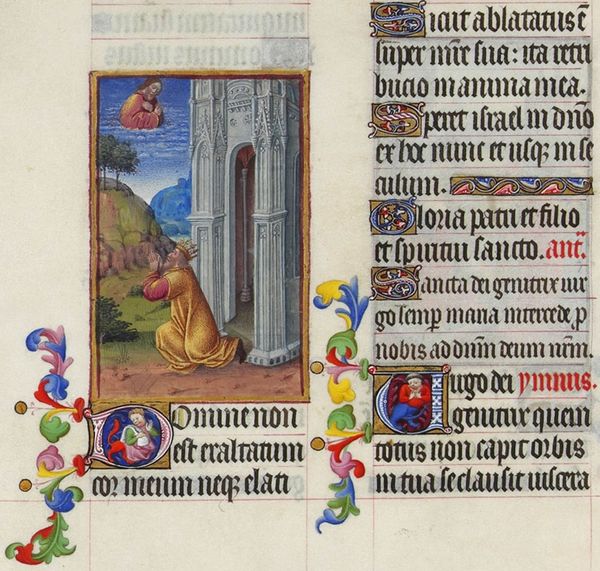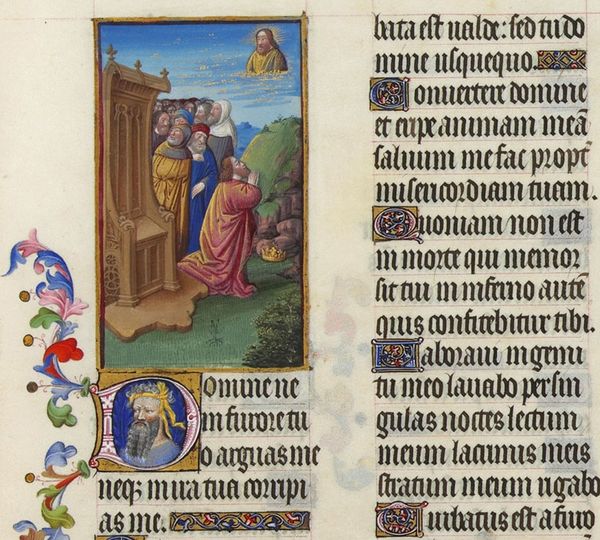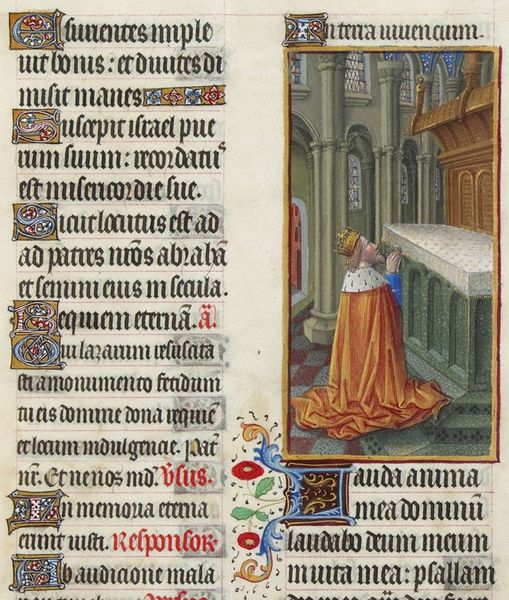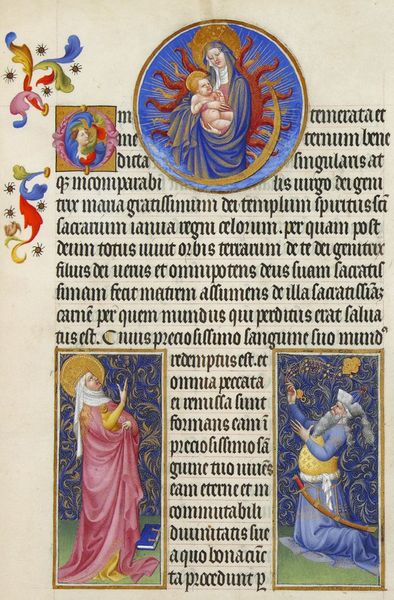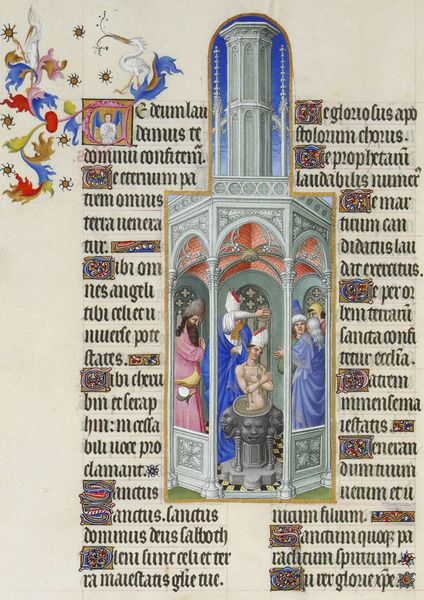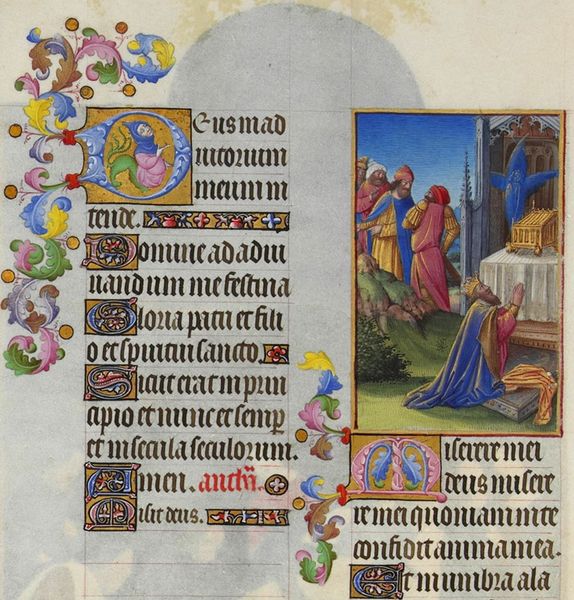
tempera, paper, watercolor, ink
#
medieval
#
tempera
#
figuration
#
paper
#
text
#
watercolor
#
ink
#
coloured pencil
#
watercolour illustration
#
history-painting
#
mixed media
#
miniature
Copyright: Public domain
Psalm CXLII was made by the Limbourg brothers around 1411-1416, using pigments and ink on vellum. Vellum, or calfskin, was a common writing surface at the time, though its preparation was labor-intensive, involving soaking, liming, stretching, and scraping to create a smooth, even surface. The image shows King David kneeling in prayer, but the making of the book itself demanded a different kind of devotional labor. The Limbourg brothers would have ground and mixed their own pigments, layering them to create the luminous colours we see here. Note the ultramarine blues created from lapis lazuli. The quality of the materials, and the time taken to apply them with such precision, speaks to the wealth and status of the patron, the Duke of Berry. This combination of luxurious materials, artisanal skill, and religious subject matter, shows how art served the interests of both spiritual and earthly power in the late medieval period.
Comments
No comments
Be the first to comment and join the conversation on the ultimate creative platform.
